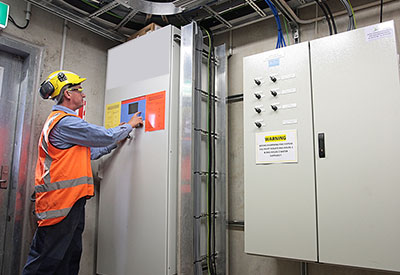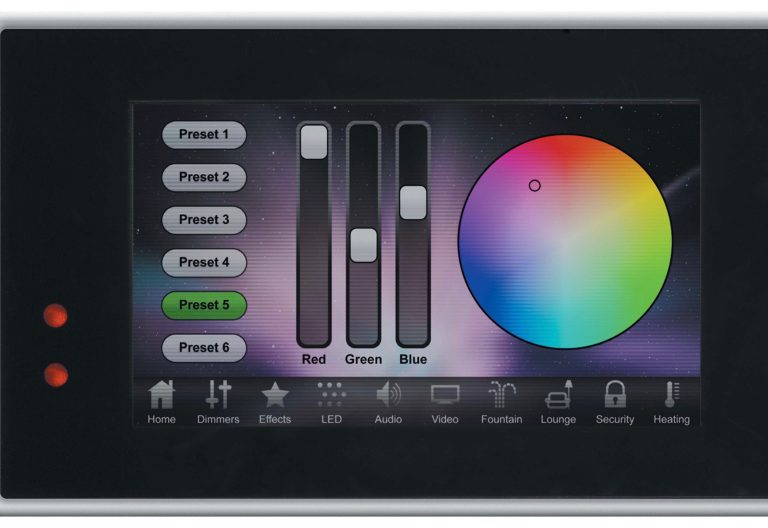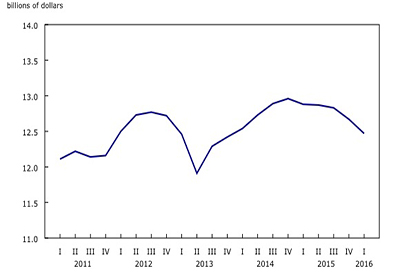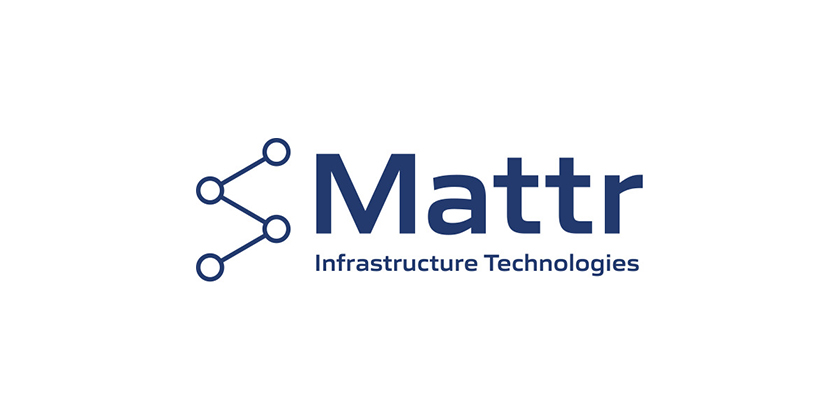Guide to the Canadian Electrical Code, Part 1 — Instalment 10

Bill Burr
The CE Code is a comprehensive document. Sometimes it can seem quite daunting to quickly find the information you need. This series of articles provides a guide to help users find their way through this critical document. This is not intended to replace the notes in Appendix B or the explanations of individual requirements contained in the CEC Handbook, but will hopefully provide some help in navigating the code. In this article: Section 18 Hazardous locations, Part 1.
Section 18 covers installation of electrical equipment in hazardous locations as defined in Section 0, such as areas in which there is a potential for the ignition of explosive or combustible gases, dusts, fibres or flyings due to the design, installation or use of electrical equipment.Since the information in this instalment is extensive, it will be presented in two parts. Part B will appear in the March 8 issue.
Rule 18-000 outlines the scope ofthis section, which is a supplementary section of the code and as such outlines additional or supplementary requirements for the selection and installation of electrical equipment in hazardous locations. In addition, Section 18 now uses the international zone system of area classification; however, in cases of addition or renovation to an existing installation classified to the Division system, the electrical equipment may be chosen and installed in accordance with Appendix J of the code. Also note that additional information is available in Appendices B and F.
Rule 18-002 provides special terminology definitions for terms used in this section, which are additional or supplementary to the definitions in Section 0.
Rule 18-004 divides the classifications into explosive gas atmospheres or explosive dust atmospheres. Reference material for area classification can be found in Appendix B. To use Section 18 you must determine the classification of the area in which you are working.
Rule 18-006: locations containing an explosive gas atmosphere are divided into zones 0, 1 or 2 depending on the frequency of occurrence and duration of an explosive gas atmosphere. Appendix B provides typical examples of explosive gas atmosphere classifications.
Rule 18-008: locations containing an explosive dust atmosphere are divided into Zones 20, 21, or 22 depending on the frequency of occurrence and duration of an explosive dust atmosphere. Appendix B provides typical examples of explosive dust atmosphere classifications.
Rule 18-010 specifies that alterations or repairs to equipment must be authorized and not be made to live equipment. In addition this rule specifies that electrical equipment in hazardous locations must be maintained in its original safe condition. Again appendix B provides additional guidance in developing proper maintenance procedures.
Section 18 is divided into three main parts covering
• general requirements
• explosive gas atmospheres
• explosive dust atmospheres
General
This rules in this part apply to all hazardous location installations, both explosive gas and explosive dust atmospheres.
Rule 18-050: the code requires that electrical equipment used in such locations be suitably designed, tested, and certified for the specific explosive atmosphere that will be present. This rule also provides groupings of various explosive gases and combustible dusts and fibres for which electrical equipment must be suitable. It also provides a hierarchy wherein electrical equipment suitable for a preceding group may also be suitable for a latter group.
Rule 18-052 lays out the marking requirements on electrical equipment intended for use in hazardous locations, which includes:
• letters “ex”
• method of protection
• group as per 18-050 above
• temperature rating
• equipment protection level
• for equipment for use in explosive gas atmospheres, the maximum surface temperature as per 18-052 (a),(b) and (3),(4), and (5)
For more specific marking information, please see Appendix B and my previous article – https://electricalindustry.ca/latest-news/1055-equipment-marking-for-hazardous-locations-in-cec-2015-23rd-edition.
Rule 18-054: equipment with an internal or external surface temperature equal to or higher than the ignition temperature of the combustible gas or explosive dust must NOT be installed in that location. This is true even for equipment that is not required to be approved for hazardous locations. While there is no definition of ignition temperature in this section, Appendix B has a chart that shows the ignition temperatures of various gas groups.
Rule 18-056: every separate area, section or room must have its own classification as a hazardous location.
Rule 18-058: if equipment rooms are intended to be hazard free in hazardous locations, they must be constructed of substantial, non-combustible materials and in such a way to ensure they remain hazard free. Where the equipment room communicates with a Zone 2 or an explosive dust atmosphere, it must be separated by close-fitting, self-closing doors. Where the equipment room communicates with a Zone 1 location, it must be considered a Zone 2 location unless ventilation and safeguards are in place as per Rule 18-002 and the definition of Zone 2(b).
Rule 18-060: when using metal-covered cable in hazardous locations, caution must be taken to ensure that
• any lightning related voltage surges on mineral-insulated cable are limited to 5 Kv,or
• circulating currents on single conductor armoured cable are eliminated
For the former, this is accomplished through the use of surge suppressors, For the latter, through bonding the metal sheaths together, at intervals of 1.8 m or less.
Alternatively, insulation jacketed cables can be used but the metal armour must be bonded to ground in the hazardous location and isolated in the non-hazardous location.
Rule 18-062: equipment rooms can be exempted from rules 18-100 to 18-158 if a continuous pressurized protective gas atmosphere is maintained.Appendix B has references to consult in accomplishing this. Note also that procedures must be in place to eliminate any possibility of an ignition source if pressurization fails.
Rule 18-064: there are three levels of energy limitation to provide intrinsically safe installations:
• ia permitted for Zone 0, Zone 1, Zone 2, Zone 20, Zone 21, or Zone 22, whichexempts from rules 18-102 to 18-254
• ib permitted for Zone 1, Zone 2, Zone 21, or Zone 22, which exempts from rules 18-102 to 18-254
• Ic permitted for use in Zone 2 or Zone 22, which exempts from 18-152 to 18-158 and 18-252 to 18-254
Appendix F provides additional information and recommended installation practice for installing intrinsically safe and non-incendive electrical equipment and wiring.
Rule 18-066: to avoid a build-up of dust on cables, cable trays should be open ladder type, covered or installed vertically.
Rule 18-068: in some hazardous locations, non-hazardous, non-arcing, sparking, or heat producingequipmentmaybe installedwhere there is a detection system that continuously monitors the area and activates an alarm, activates ventilation equipment, or de-energizes electrical equipment if a gas concentration reaches a percentage of the explosive limit.The percentage depends on the existence and continued operation of a ventilationsystem.Consult Appendix H for application, installation and maintenance recommendations.
Rule 18-070: where electrical equipment is in contact with flammable fluids, the primary seal must be constructed or installed to prevent any migration of such fluids through the wiring system.If this is accomplished through the use of a secondary seal, an indication or warning marking is required in case the primary seal fails.
Rule 18-072: the rules of Section 10 Grounding and bonding apply to hazardous locations. Additionally, where rigid metal conduit is used, threaded couplings and bosses on enclosures made up tight are required,unless incorporating internal bonding conductors.
Rule 18-074: only intrinsically safe equipment or cranes, hoists and similar equipment installed as per 18-250(2) are permitted to have uninsulated exposed parts in hazardous locations.
In the next instalment we will continue with Part B of Section 18.
* The source for this series of articles is the Canadian Electrical Code, Part I, published by CSA.
Read the rest of the instalments in the series:
Part 1: Guide to the CE Code, Part I – A Roadmap (Installment 1 in a Series)
Part 2: A Road Map to the CE Code, Part I – Installment 2
Part 3: Guide to the Canadian Electrical Code, Part I – Installment 3
Part 4: A Road Map to the CE Code, Part 1 – Installment 4
Part 5: Guide to the Canadian Electrical Code, Part I — Installment 5
Part 6: Guide to the Canadian Electrical Code, Part I — Installment 6
Part 7: Guide to the Canadian Electrical Code, Part I — Installment 7
Part 8: Guide to the Canadian Electrical Code, Part I — Installment 8
Part 9: Guide to the Canadian Electrical Code, Part I — Installment 9
Part 10: Guide to the Canadian Electrical Code, Part 1 – Installment 10
Part 11: Guide to the Canadian Electrical Code, Part 1 – Installment 11
William (Bill) Burr is the former Chair of the Canadian Advisory Council on Electrical Safety (CACES), former Director of Electrical and Elevator Safety for the Province of BC, and former Director of Electrical and Gas Standards Development and former Director of Conformity Assessment at CSA Group. Bill can be reached at Burr and Associates Consulting billburr@gmail.com.









![Guide to the Canadian Electrical Code, Part 1[i], 26th Edition – A Road Map: Section 26](https://electricalindustry.ca/wp-content/uploads/2022/11/Guide-CE-Code-2.png)







